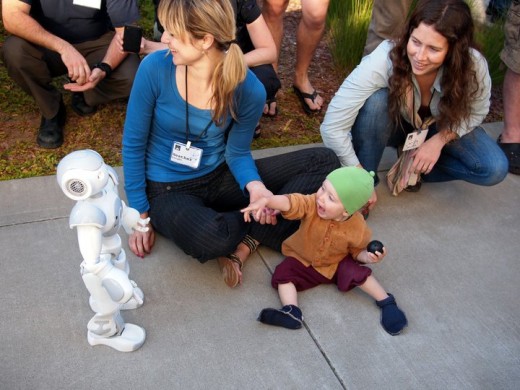
On Thursday, at the Behance Network‘s 3rd annual 99% Conference in New York City, 380 advertising, design and related creative professionals and enthusiasts gathered for the first of 2 days of quality speakers and potential industry connections.
The afternoon sessions broke out into “master classes,” one of which, titled “Innovating in the Real World: Using Design-Thinking To Create Positive Change” featured Diego Rodriguez, a partner at IDEO and a founding professor at the d.school at Stanford. Leading IDEO’s Bay Area offices, Rodriguez works with clients on new ventures, organizational design and marketing strategies. In 2010 Rodriguez was named by Fortune as one of “The Smartest People in Tech”.
 “I am obsessed with this idea of awesomeness,” Rodriguez began, “But over the past couple of years, I started worrying that I didn’t have a set of principles or a way of looking at the world that was consistent.” He asked, “Why are some people doing it better than others? Is it organizational know how? Tacit knowledge?” Drawing on 20 years of experience bringing concepts to market at IDEO and beyond, Rodriguez shared his personal “Declaration of Innovation,” 21 principles, starting with foundational approaches, designed to help you make innovations happen. While many of them are full on consultant-speak, he delivered a number of noteworthy gems.
“I am obsessed with this idea of awesomeness,” Rodriguez began, “But over the past couple of years, I started worrying that I didn’t have a set of principles or a way of looking at the world that was consistent.” He asked, “Why are some people doing it better than others? Is it organizational know how? Tacit knowledge?” Drawing on 20 years of experience bringing concepts to market at IDEO and beyond, Rodriguez shared his personal “Declaration of Innovation,” 21 principles, starting with foundational approaches, designed to help you make innovations happen. While many of them are full on consultant-speak, he delivered a number of noteworthy gems.
On Being an Innovator
What’s your process?
1. Experience the world instead of talking about experiencing the world.
It’s true! And sad how often we don’t open ourselves up to inspiration in our busy lives. You cannot create without inspiration. And you can’t get inspiration from sitting in your office cube all day long staring at a computer screen. Take your dog to the park. Meet for coffee instead of scheduling a phone call. Take your employees out for dinner. Design an iPhone app. Pitch your greatest idea to your 2-year-old. Read a book that has nothing to do with your line of work. Travel, and then use Loosecubes to book office space abroad.
2. See and hear with the mind of a child.
Have humility. Have wonder. Be willing to play. He asked, “How can you use play to get to a productive end? How can you integrate play into your normal flow?” It’s these questions that great managers ask themselves. Read about why: The future of work is play.

3. Always ask: How do we want people to feel after they use it?
“It’s the difference between thinking about beer and the experience of drinking beer,” says Rodriguez. Emphasizing the importance of the experience, he draws a corollary between Hamburger Helper and Dream Dinners, an organization that brings together working moms, providing them with a place to cook together and all the necessary ingredients. They leave with plenty of meals to freeze and thaw when the time calls. So while it’s essentially the same idea as Hamburger Helper (microwavable meals) Dream Dinners is selling a totally different experience.
“The very best stuff is designed around the experience,” he said. “Think of Disneyland, it’s highly successful because it’s a seamless experience.”
4. Prototype as if you are right. Listen as if you are wrong.
“What is a prototype?” Rodriguez asked the audience. “A prototype is a single question embodied.”
 Never attend a meeting without a prototype but be prepared to listen to feedback. It’s this feedback that will move your product forward. Build, test, listen. The faster you go through that cycle, the more cycles you get and the more cycles, the better.
Never attend a meeting without a prototype but be prepared to listen to feedback. It’s this feedback that will move your product forward. Build, test, listen. The faster you go through that cycle, the more cycles you get and the more cycles, the better.
“You only learn when you start breaking things.”
-Raney’s Corollary
But really, it’s all about the verb: prototyping. “I’d much rather talk about it as a verb,” he said. “I hate using the word design. It makes me want to vomit. But designing is good.”
5. Anything can be prototyped and you can prototype with anything.
While one of his weaker points in the discussion, essentially Rodriguez says we want things to start breaking because that’s what enables us to learn.
6. Live at the intersection of desirability, viability and feasibility.
This step is literally consulting 101, but he mentioned it many times throughout his talk. He instructs to start with desirability (you could do a lot worse than knowing there’s one person on the planet who would definitely buy your product) then move to viability and feasibility. Then it’s all about finding the balance, and living at the intersection of all three of those bubbles.
On Leading Innovation
How do you lead?
7. If you’re going to be leading innovation, develop a taste for the many flavors of innovation.
Don’t necessarily always strive or always judge your product on the scale of evolutionary. Incremental innovation is what keeps the lights on. If a TIDE brand manager finds a new scent that adds new sales and makes people’s lives smell better, that’s still innovation that should be celebrated.
8. Most new ideas aren’t.
Do you have any idea how long electric cars have been around for? Tesla’s Roadster may be the way of the future, but it’s also calling on the past.

But have you ever seen an electric car powered wirelessly? Now that’s innovation.
9. Killing good ideas is a good idea.
Take 10 minutes to map out everything that you’re working on. Then kill a few of those ideas. You can’t do everything and still be innovative.
“I’m actually as proud of many of the things we haven’t done as the things we have done. The clearest example was when we were pressured for years to do a PDA, and I realized one day that 90% of the people who use a PDA only take information out of it on the road. They don’t put information into it. Pretty soon cellphones are going to do that, so the PDA market’s going to get reduced to a fraction of its current size, and it won’t really be sustainable. So we decided not to get into it. If we had gotten into it, we wouldn’t have had the resources to do the iPod. We probably wouldn’t have seen it coming.”
-Steve Jobs
Life without the iPod? Now that would be a scary world. In short, you can’t do everything, and trying to do so as an individual and as a company causes more harm than gain.
“More organizations die of indigestion than starvation.”
-Hewlett Packard.
10. Baby steps often lead to big leaps.
Did you know that the company Red Octane spent 10 years releasing mediocre games and products before hitting it big with two games you may have heard of: Guitar Hero and Rock Band. What became an overnight success was actually 10 years in the making.
11. Everyone needs time to innovate.
That means everyone. And giving them time. How can you trust everyone in your organization to innovate? Hire good people. In history, some of the best ideas have come from the mailroom.
“I’m good at getting things done, but what we get done needs to come from those who have the best ideas–whether it’s someone in the mailroom, a first-year student, or someone on the senior faculty. The best ideas deserve the most attention.”
-David A. Kessler, M.D, Yale University
12. Try cultivating instead of managing.
You may have heard of the garden metaphor, which breaks down 3 different ways to act as a leader.
- Be at the bottom of things, be in the soil. Understand your purpose is to make those roses bloom beautifully.
- Take a bird’s eye view and keep a clear vision of how you want the garden to look.
- Trust what is there. Trust what’s in the garden will grow. Trust the seeds to do their thing. Don’t dig them up to make sure they’re sprouting, let them be.
“Leadership is building empathy for the people you’re entrusted to help. Once you understand what they really value it’s easy because you can mostly give it to them, you can get out-of-the-way and let them go.”
-David Kelly

On mobile? Click here for the next page.
On Failing
What’s your relationship to failure?
13. Do everything right and you’ll probably fail.
Nokia is failing. Did you know that 70% of Nokia’s products have been discontinued while 21% were absorbed in to something else?
14. Failure sucks, but instructs. (If you let it.)
Remember, you only learn when you start breaking things. Failing is bad at a macro level, but failing at a micro level can lead to macro-success. Nokia started to realize they couldn’t have their products failing all the time. But what did happen, was that 25% of those failed products actually grew new capabilities for the company, most of them in form of new intellectual property.
15. Celebrate errors of commission. Stamp out errors of omission.
Remember when General Motors released the Pontiac Aztek? The famously garish car was such a disaster that Bob Lutz felt compelled to return to the company. In the memo to staffers, titled “Strongly Held Beliefs,” Lutz addressed the Pontiac Aztek, saying:
“In our business, taking no risk is to accept the certainty of long-term failure. (Even Aztek, in this sense, is noble!),” Lutz said.

16. High EQ teams rule.
Teams with EQ, or emotional quota are essential. Tracking the happiness and fulfillment of your staffers can be marked by 3 important behaviors.
- Proactive self disclosure.
- Inviting outsiders in.
- Making everyone who contributes feel a part of the team.
17. It’s not the years, it’s the mileage.
It’s all about the “experience” you’ve had in your position. We’ve seen this quite a bit with 18-year old entrepreneurs who’ve successfully launched numerous companies. Age doesn’t matter as much as what you’ve produced. Like Mark Bao, my favorite 18-year old entrepreneur who launched 5 companies and 2 foundations before he left high school.
18. Knowing when to orbit the hairball.
This might sound funny, but if you’ve ever read the famous book Orbiting the Giant Hairball: A Corporate Fool’s Guide to Surviving with Grace, then you’ll understand that “Giant Hairball” refers to a company. The book is about the relationship between an individual and their company. You have to find the right amount of overlap. You are not your company, and vice versa. In short, “Know Yourself.”
Shipping
 19. Have a point of view.
19. Have a point of view.
Have a declarative statement that says: This is what matters and nothing else matters relative to the thing we’re working on.
Look at brands and products who “got it” like The Beatles, Vimeo, Tom’s Shoes and even quirky characters like Bill Murray. Think: this is our point of view and we’re not deviating from it. If you don’t have a point of view, stop and go get it.
20. Never settle. Be remarkable. (Shoot to do epic stuff.)
Embrace mediocrity in the day-to-day but be shooting for the remarkable.
21. Doing is the resolution of knowing.
“The best way to get started is to quit talking and begin doing.” Walt Disney.
Rodriguez’s lecture held a few sparkling gems, sandwiched between a number of overly used aphorisms from the consulting world. While I indeed found inspiration from his lecture, it seems a bit contrary to have a set of guidelines that I should follow to be innovative. Isn’t innovating about breaking out of guidelines? Is it right to put structure on something that’s supposed to be a creative process? I imagine leading big companies through this process is beneficial; after all it’s why IDEO is without a doubt, the industry leader in design consultancy.
(*This piece represents what I digested from his talk, and while the numbered items are Rodriguez’s exact principles, the explanations I provided are my own and are not word for word what Rodriguez presented.)
For 140 character bits of insight, follow Rodriguez @metacool on Twitter. See our additional coverage of the 99% Conference here.
Get the TNW newsletter
Get the most important tech news in your inbox each week.




